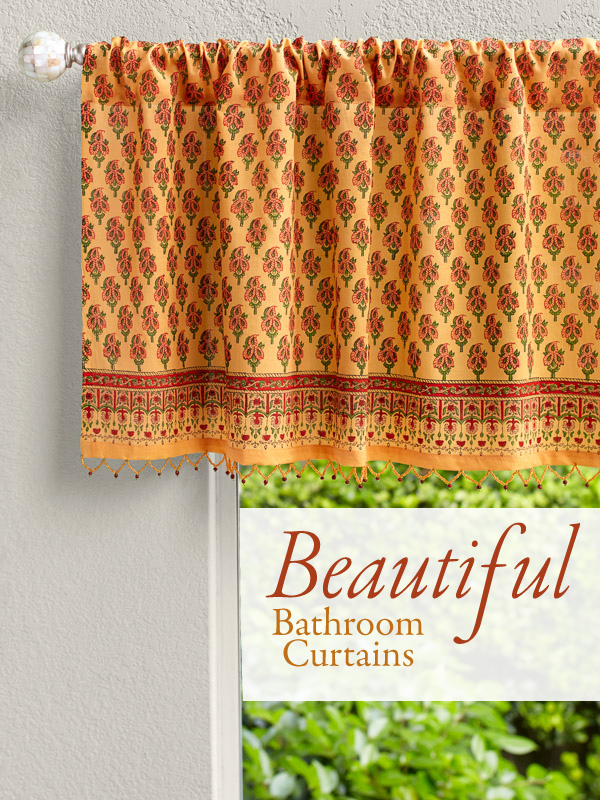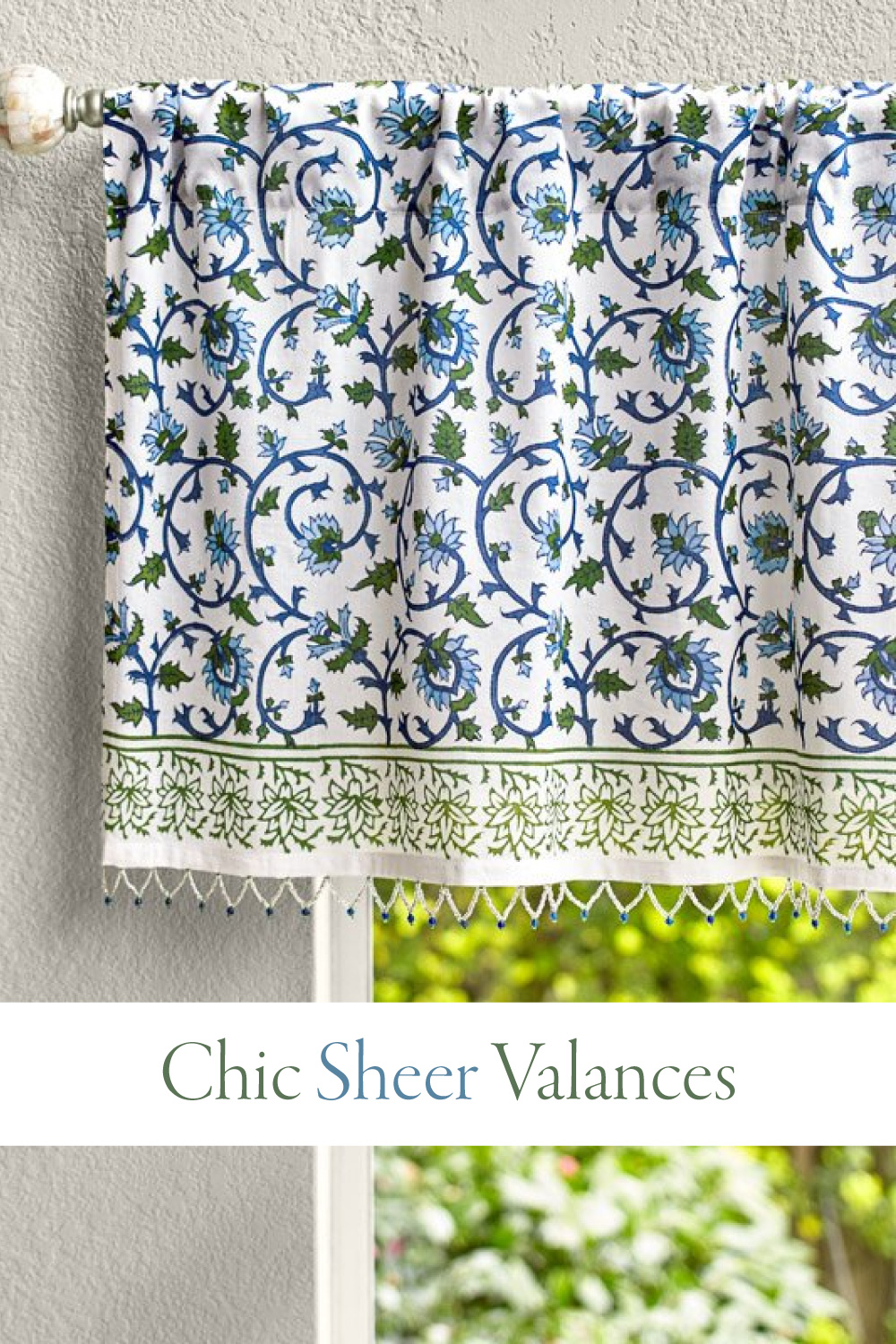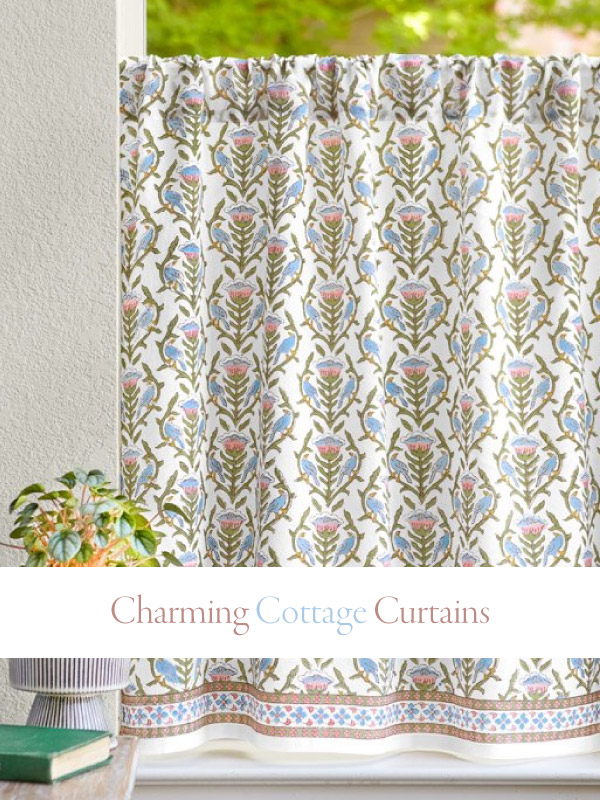We decorate walls with beautiful paintings and colors, floors with ornate tiles and panels, but what about windows? You may be missing a window of design opportunity here (pun intended!) for tying your room together. Here, we’ll go over how to dress windows in your home and the different window treatment ideas you might consider for your next interior design makeover. From elegant fabric curtains to vintage-inspired shutters, we’ll consider the pros and cons of each.
Why dress up your windows?
In short, you should dress up your windows for functionality, style, and privacy. Window treatments help insulate your home against outdoor temperature, keep out harsh light, and prevent anyone from seeing inside your home. Plus, some curtains can help dampen sound from outside, toning down traffic or your neighbor’s thundering lawn mower.
A beautiful curtain or set of blinds also make your windows look put-together and elegant. The right color, height, and style will help to make a space feel more like a home.
Window treatment ideas
Curtains are not the end-all and be-all of learning how to dress windows. They are the most traditional, but you can combine them with other treatments for a unique look throughout your home. Here are a few window dressing ideas to consider.
Long, sheer curtains
Sheer curtains are great if you enjoy light in a room, but also value your privacy. Saffron Marigold curtains are block printed on soft, preshrunk cotton voile that adds a warm touch any room. These won’t totally block out the sun, noise, or your silhouette at night, but they can be paired with blockout panels, too.
Choose from our collection of handprinted designs available in different sizes. Our shorter panels (63, 84) come with 4-inch tabs while our longer panels (96, 108) come with 4-inch rod pockets.
Kitchen curtains and valances
As their name suggests, kitchen curtains are the the perfect window dressing ideas for the kitchen. However, you can use them in any room to cover up half of a regular-sized window, allowing you to create a layered look. Every kitchen curtain and valance comes with a 3-inch rod pocket that makes it easy to install.
Similarly, valances can be used on top of long, sheer curtains for a layered aesthetic. Short window dressings also give you the opportunity to mix patterns and colors with your longer panels. If you prefer a traditional look, pair valances and kitchen curtains from the same collection.
Blinds and shades
These are window dressing ideas that will serve you well if you want more control over how much light or heat enters your home, since they are more adjustable than curtain panels. Blinds and shades come in all materials, from vinyl to natural fibers. Install them behind curtains if you prefer the look of fabric.
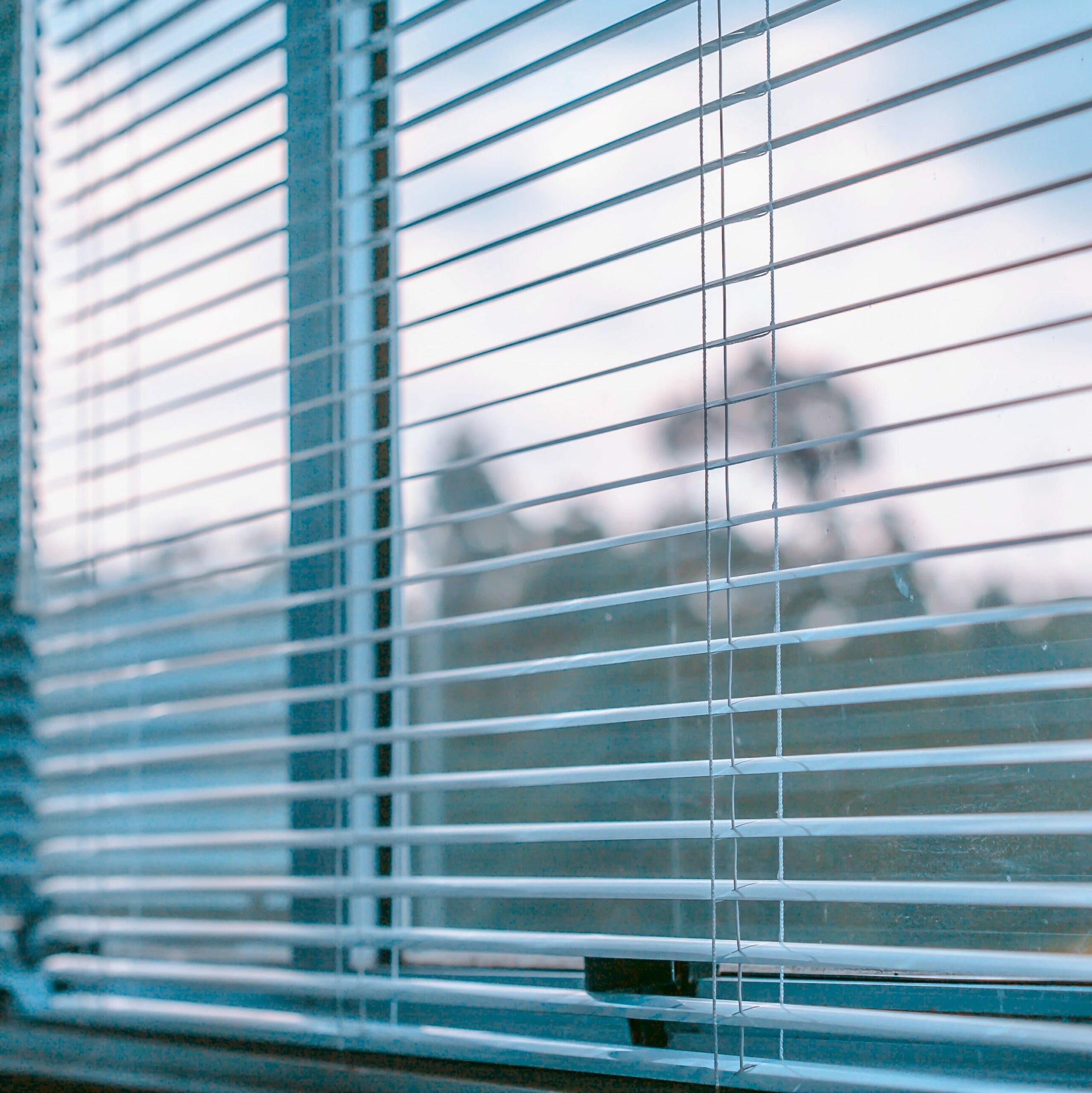
Blinds
Unsplash
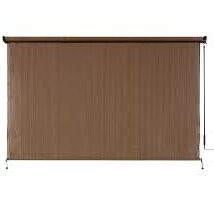
Shades
Lowes
Stained glass or frosted glass designs
For the home that needs a creative window dressing, try applying your own design (or a stencil) onto your glass windows. Some easy-install ideas include faux stained glass or frosted glass stickers. These are cut to fit decals and accommodate different window sizes. Plus, they’re easy to remove.
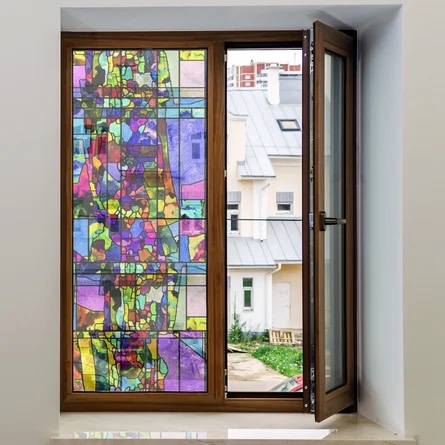
Wayfair
Non-Adhesive Decorative Privacy Window Decal
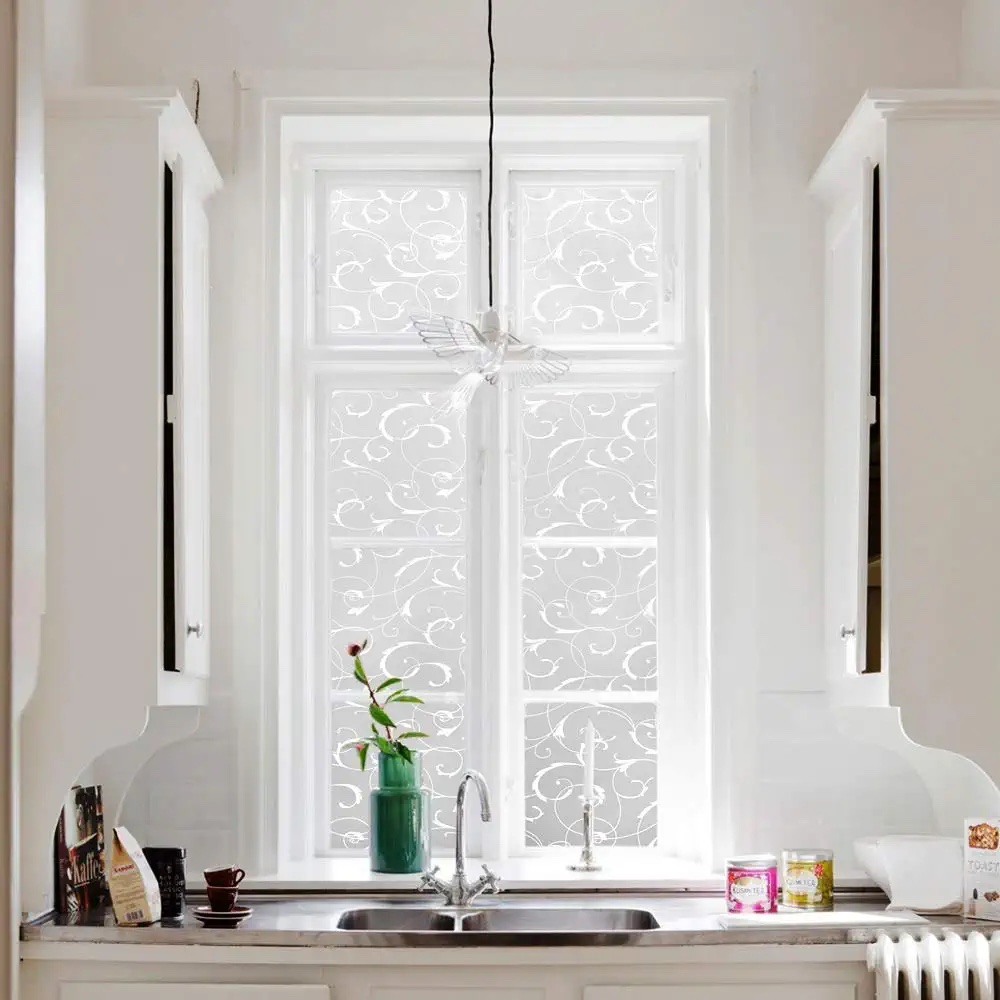
Window Privacy Film
Window Privacy Film
Window shelves
Pressed on space? Use windows to show off your plants to save a some square feet. Window shelf models include invisible suction cup acrylic trays, wall-installed units, and hanging shelves. Top these off with a window valance for a complete look.
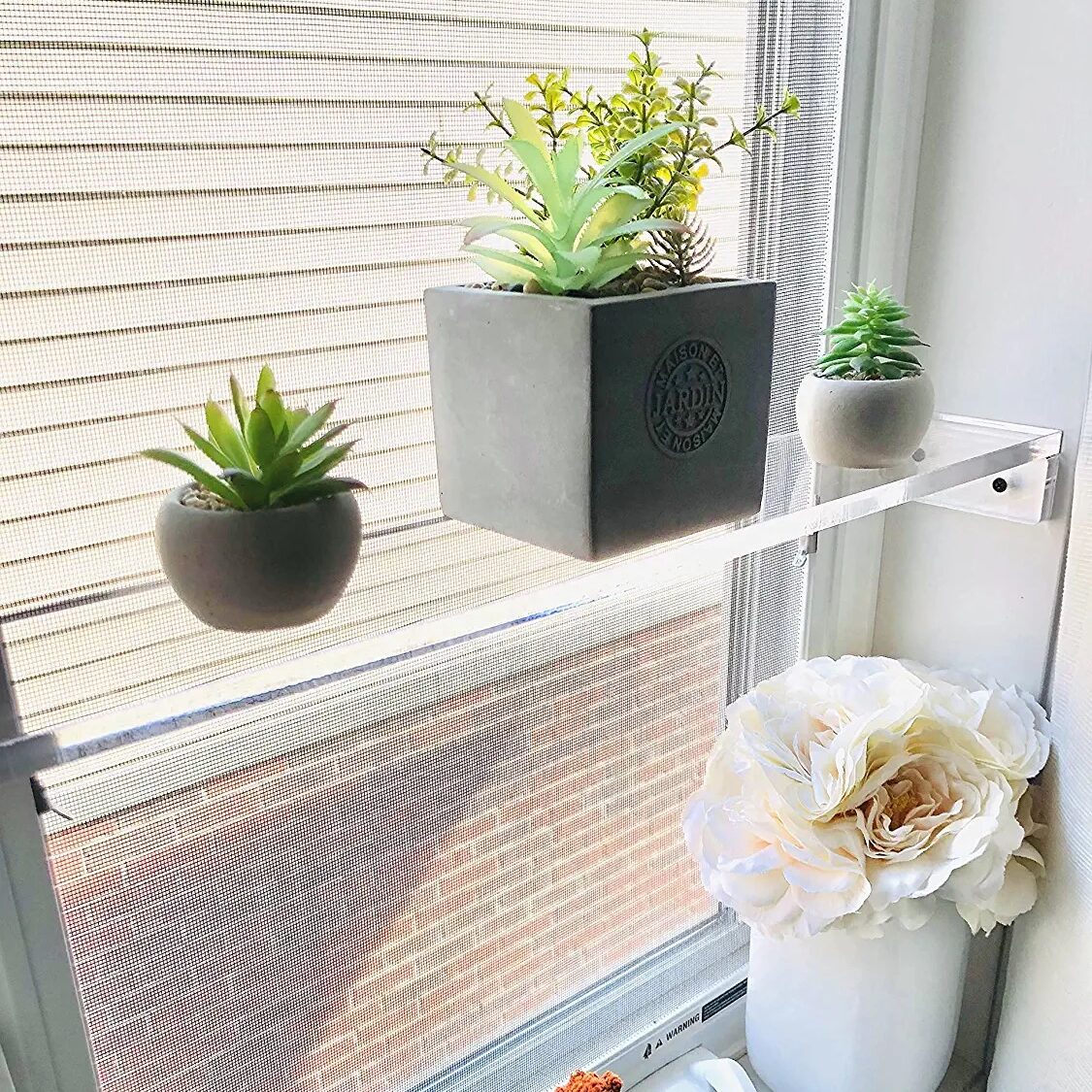
Amazon
Floating Window Shelf
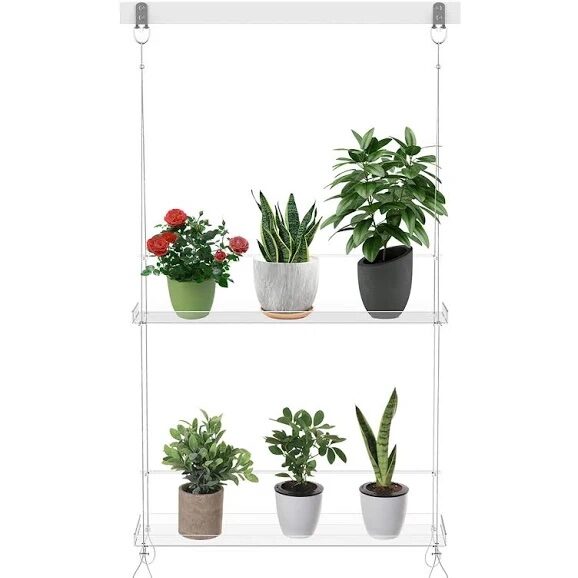
Amazon
Window Plant Shelves
Privacy screens or shutters
A freestanding privacy screen might be best if you want a transitional piece of decor. Use one to section of a room, and create height for visual interest. Screens are available in many designs, sizes, and materials. Plus, they can be folded up and stored away quickly.
On the other hand, wooden shutters lend a rustic charm to your space, and are a bit more durable than vinyl blinds. They open completely to let in light and give you access to your window operations. Solid shutters are beautiful, but are less versatile in look and function than slatted versions.
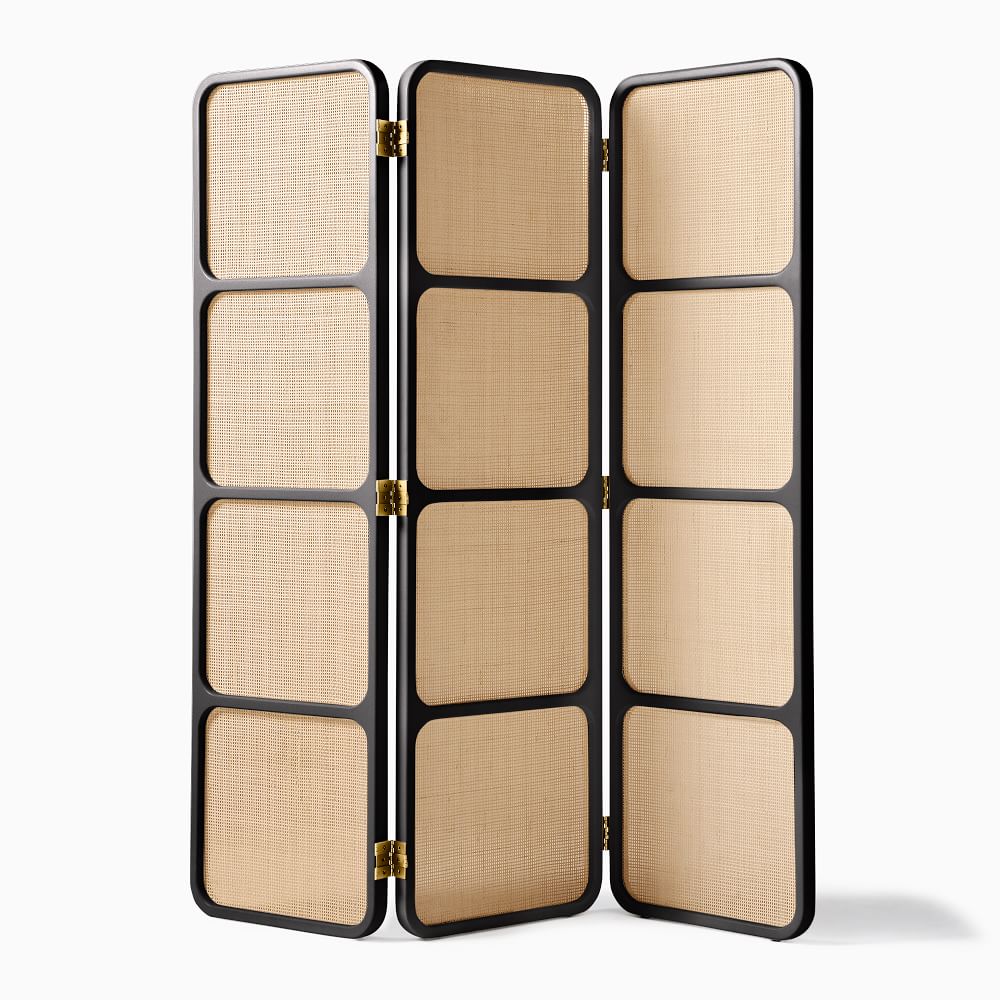
West Elm
Ida Screen
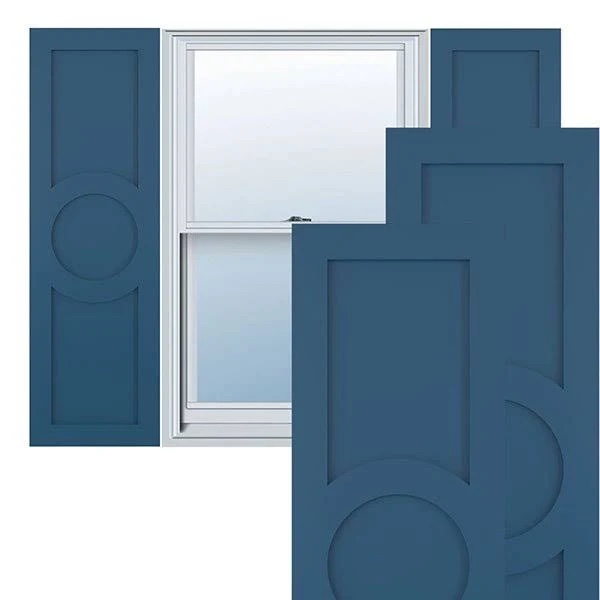
Zorro
Ekena Millwork Shutters
How to dress bay windows
Bay windows are a favorite architectural feature among homeowners, and naturally, you want to showcase them. It’s no wonder most people want to know how to dress this type of window.
Full length curtains are a classic choice. If you’re going with floor-length curtains, you’ll need at least four panels to cover up the windows, and more for wider walls.
Roman blinds are another favorite, as they help control how much light enters your room. Mix blinds with curtains if you’re sensitive to light, or want to maximize your home’s insulation.
Old-fashioned wooden shutters might be the way to go if you enjoy a more carefree vibe. Try half-tier shutters for privacy, and layer fabric curtains in front. Full-tier shutters might be best if you want more control over light. Solid shutters are another great candidate if you want a traditional look.
Curtains or blinds in the living room?
Curtains give you more stylistic freedom, but some blinds (e.g. Venetian blinds) give you more light control. While curtains may be more expensive at first, curtains provide better insulation and soundproofing compared to blinds. This is something to consider if your area’s weather is extreme during hot and cold months.
Good news is, you don’t have to choose between one or the other. A common strategy is to pair the two and get the best of both worlds.
Most common window types
Your window type might determine the best (and best-looking) window dressing for you. Let’s take a look at the different styles installed in most homes.
Single-hung and double hung windows
A single-hung window is one with a bottom part that either slides down or opens slightly, as pictured below on the left. A double-hung window is one with both parts that slide or partly open, as pictured below on the right. A set of cafe curtains look great on hung windows.
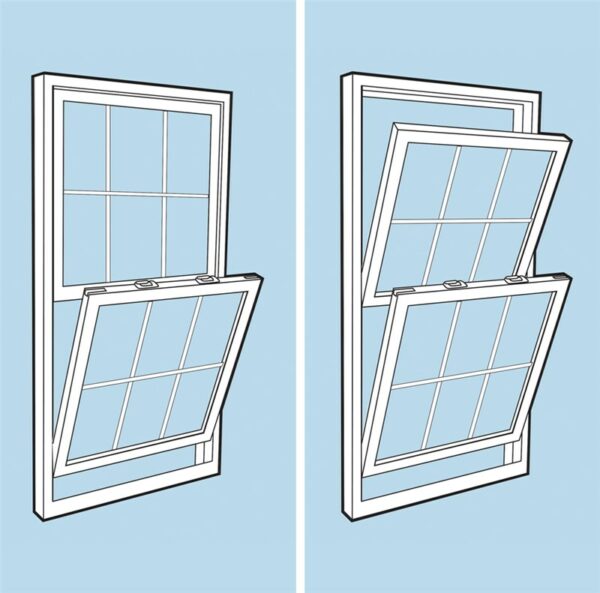
Bay windows
Taking up pretty much an entire wall, bay windows are made of a large center window and two smaller ones on either side. These are great for letting light in, and look beautiful with long curtain panels.
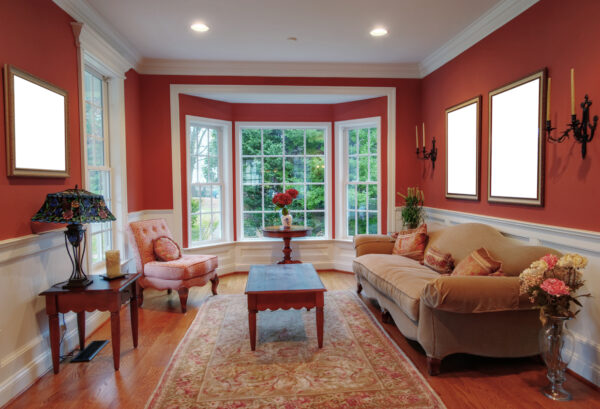
Picture windows
A picture window frames your outside view, capturing your scenery in real time. These don’t open, but they do let in a lot of light. They can span from floor to ceiling or take up just a square in the middle of a wall. Their versatility affords them to be paired with any window treatment.
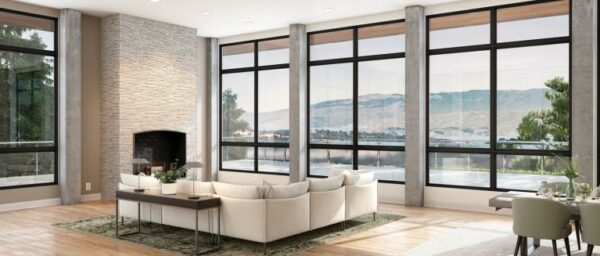
Slider windows
Slider windows are another popular choice, allowing you to let in as much air and light as you want. They may have an advantage over hung windows, as they are easier to slide for most people.
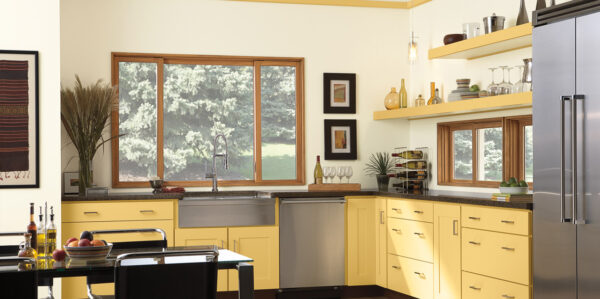
Awning windows
Awning windows are designed for ventilation, helping water and air escape from areas that generate a lot of condensation like the bathroom or kitchen. And, they don’t need to be closed in case of rain. More heavy-duty designs also keep out noise when closed.
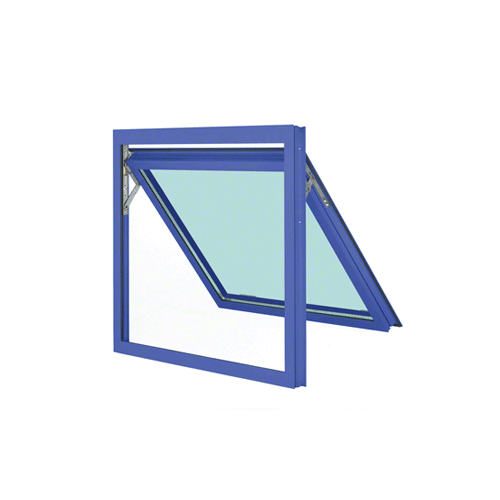
What to keep in mind when dressing up windows
Before you kickstart your decoration scheme for your windows, remember to keep these factors in mind when making your purchases.
Size/Length:
Fabric curtains vary in length. Saffron Marigold offers panels that are 63, 84, 96, or 108 inches long. They are 44 inches wide. At other stores, you might find curtains that are 120 inches long, and these are best for floor to ceiling windows, or if you want to achieve a dramatic, palatial look.
Kitchen curtains are shorter and Saffron Marigold offers panels that are 24, 30, and 36 inches long each. They are 44 inches wide, which means they accommodate standard windows.
Lastly, valances are the shortest curtain type. Saffron Marigold window valances are 17 inches long and 44 inches wide. The rod pockets are 3 inches wide, making each panel easy to hang up.
Material
Depending on your window treatment type, your choice of material will vary greatly. Fabric curtains are usually made of cotton, polyester, silk, linen, or rayon. We proudly print ours on soft, fair trade, and preshrunk cotton, which holds our block printed designs well, and stands up to daily use.
Blinds and shades are typically made of vinyl, aluminum, bamboo, wood, faux wood, or fabric (cotton, polyester, linen.) Aluminum is a classic choice, but it bends easily, and may not be best for high-traffic homes with acrobatic pets, for instance. Authentic or imitation wood is favored for its aesthetic-boosting effect. Fabric feels contemporary and it insulates well, but it will hold onto moisture and odors.
Shutters are almost exclusively made of some type of wood like hardwood, plywood, or MDF. Solid wood is known for its durability, and it makes a room feel authentic, with its unique grains and markings. However, MDF and plywood are lower cost, and they suit a more modern home.
Color
Choose a color that’ll speak to the rest of your room. For example, if you’re trying to make a space look more spacious, consider a fabric curtain that blends into your walls and furniture. In any case, your curtain should match an existing color in your room already, such as your sofa or flooring.
However, a pop of color in a window valance or shutter is great for breaking up a monotonous color scheme. Pair different window treatments together for two looks in one, e.g. when a curtain is drawn back and the shutters are closed or vice versa.
Design
Every window treatment will fit into a certain style or aesthetic, and this should factor into your decision. Does it look retro? Will it mesh well with your global eclectic design? Are the lines in the shutter clashing with the lines in your furniture? The window treatment’s form, print, and color determines whether it’s a perfect for your space or not.
Insulation
Keep out cold and heat by being strategic with your window dressing. Curtains are preferred for insulation (and soundproofing), but when combined with shutters or blinds, you’ll get the best results.


